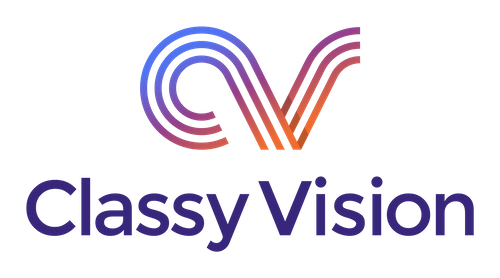- November 2020: Vision Transformers now available, with training recipes!
2020-11-20: Classy Vision v0.5 Released
- Release Vision Transformers model implementation, with recipes(#646)
- Implemented gradient clipping (#643)
- Implemented gradient accumulation (#644)
- Added support for AdamW (#636)
- Added Precise batch norm hook (#592)
- Added support for adaptive pooling in
fully_convolutional_linear_head(#602) - Added support for sync batch norm group size (#534)
- Added a CSV Hook to manually inspect model predictions
- Added a ClassyModel tutorial (#485)
- Migrated to Hydra 1.0 (#536)
- Migrated off of tensorboardX (#488)
ClassyOptimizerAPI improvements- added
OptionsViewto retrieve options from the optimizerparam_group
- added
- Removed
ClassyModel.evaluation_mode(#521) - Removed
ImageNetDataset, now a subset ofImagePathDataset(#494) - Renamed
is_mastertois_primaryindistributed_util(#576)
2020-04-29: Classy Vision v0.4 Released
- Release EfficientNet model implementation (#475)
- Add support to convert any
PyTorchmodel to aClassyModelwith the ability to attach heads to it (#461) - Squeeze and Excitation support for
ResNe(X)tandDenseNetmodels (#426, #427) - Made
ClassyHooks registrable (#401) and configurable (#402) - Migrated to
TorchElastic v0.2.0(#464) - Add
SyncBatchNormsupport (#423) - Implement
mixuptrain augmentation (#469) - Support
LARCfor SGD optimizer (#408) - Added convenience wrappers for
Iterabledatasets (#455) Tensorboardimprovements- Invalid (
NaN/Inf) loss detection - Revamped logging (#478)
- Add
bn_weight_decayconfiguration option forResNe(X)tmodels - Support specifying
update_intervalto Parameter Schedulers (#418)
ClassificationTaskAPI improvement andtrain_step,eval_stepsimplification- Rename
lrtovaluein parameter schedulers (#417)
2020-03-06: Classy Vision v0.3 Released
checkpoint_folderrenamed tocheckpoint_load_path(#379)- head support on
DenseNet(#383) - Cleaner abstraction in
ClassyTask/ClassyTrainer:eval_step,on_start,on_end, … - Speed metrics in TB (#385)
test_phase_periodinClassificationTask(#395)- support for losses with trainable parameters (#394)
- Added presets for some typical
ResNe(X)tconfigurations: #405)
Classy Vision is a new end-to-end, PyTorch-based framework for large-scale training of state-of-the-art image and video classification models. Previous computer vision (CV) libraries have been focused on providing components for users to build their own frameworks for their research. While this approach offers flexibility for researchers, in production settings it leads to duplicative efforts, and requires users to migrate research between frameworks and to relearn the minutiae of efficient distributed training and data loading. Our PyTorch-based CV framework offers a better solution for training at scale and for deploying to production. It offers several notable advantages:
- Ease of use. The library features a modular, flexible design that allows anyone to train machine learning models on top of PyTorch using very simple abstractions. The system also has out-of-the-box integration with Amazon Web Services (AWS), facilitating research at scale and making it simple to move between research and production.
- High performance. Researchers can use the framework to train Resnet50 on ImageNet in as little as 15 minutes, for example.
- Demonstrated success in training at scale. We’ve used it to replicate the state-of-the-art results from the paper Exploring the Limits of Weakly Supervised Pretraining.
- Integration with PyTorch Hub. AI researchers and engineers can download and fine-tune the best publically available ImageNet models with just a few lines of code.
- Elastic training. We have also added experimental integration with PyTorch Elastic, which allows distributed training jobs to adjust as available resources in the cluster changes. It also makes distributed training robust to transient hardware failures.
Classy Vision is beta software. The project is under active development and our APIs are subject to change in future releases.
Make sure you have an up-to-date installation of PyTorch (1.4), Python (3.6) and torchvision (0.5). If you want to use GPUs, then a CUDA installation (10.1) is also required.
To install Classy Vision via pip:
pip install classy_visionTo install Classy Vision via conda (only works on linux):
conda install -c conda-forge classy_visionAlternatively you can do a manual install.
git clone https://github.com/facebookresearch/ClassyVision.git
cd ClassyVision
pip install .Classy Vision aims to support a variety of projects to be built and open sourced on top of the core library. We provide utilities for setting up a project in a standard format with some simple generated examples to get started with. To start a new project:
classy-project my-project
cd my-projectWe even include a simple, synthetic, training example to show how to use Classy Vision:
./classy_train.py --config configs/template_config.jsonVoila! A few seconds later your first training run using our classification task should be done. Check out the results in the output folder:
ls output_<timestamp>/checkpoints/
checkpoint.torch model_phase-0_end.torch model_phase-1_end.torch model_phase-2_end.torch model_phase-3_end.torchcheckpoint.torch is the latest model (in this case, same as model_phase-3_end.torch), a checkpoint is saved at the end of each phase.
For more details / tutorials see the documentation section below.
Please see our tutorials to learn how to get started on Classy Vision and customize your training runs. Full documentation is available here.
- Website: https://classyvision.ai
- Stack overflow
- Slack: invite link
See the CONTRIBUTING file for how to help out.
Classy Vision is MIT licensed, as found in the LICENSE file.
If you use Classy Vision in your work, please use the following BibTeX entry:
@article{adcock2019classy,
title={Classy Vision},
author={{Adcock}, A. and {Reis}, V. and {Singh}, M. and {Yan}, Z. and {van der Maaten} L., and {Zhang}, K. and {Motwani}, S. and {Guerin}, J. and {Goyal}, N. and {Misra}, I. and {Gustafson}, L. and {Changhan}, C. and {Goyal}, P.},
howpublished = {\url{https://github.com/facebookresearch/ClassyVision}},
year={2019}
}


